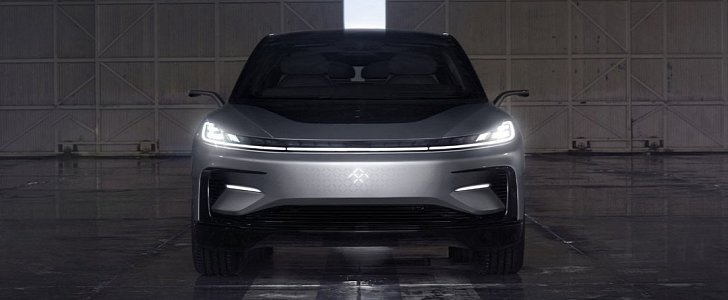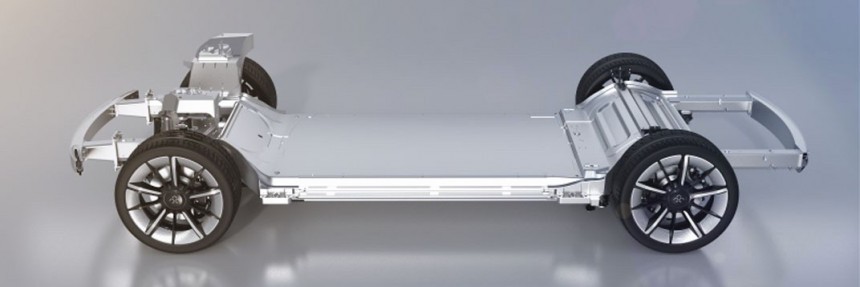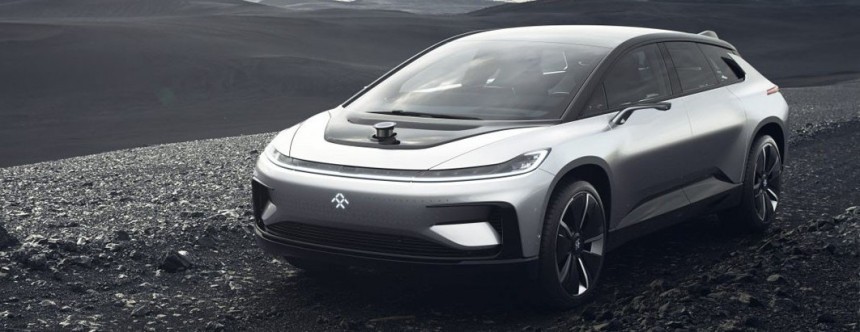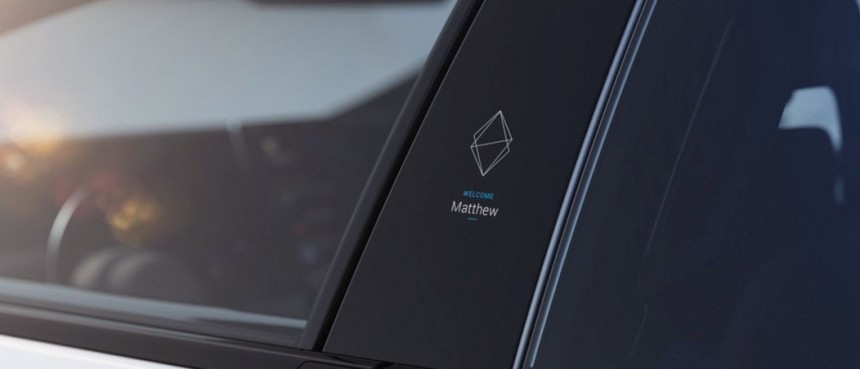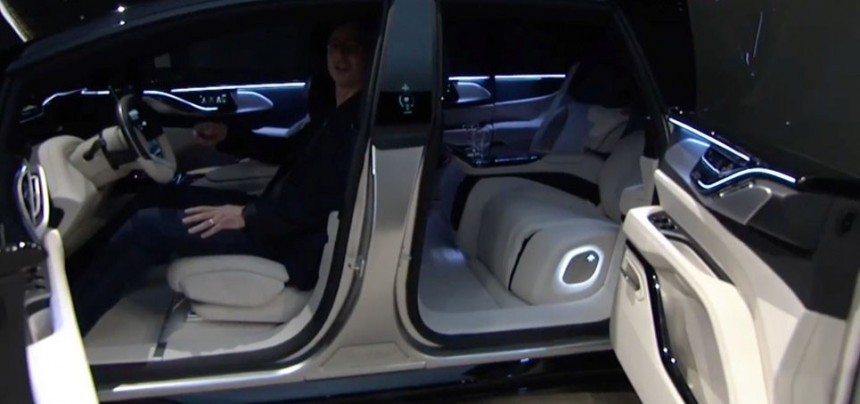Faraday Future surprised some of us with its unveiling at the 2017 CES. In spite of the rumors that announced problems within the organization, FF made a production car.
It is called the FF 91, and we agree with anyone who thinks that almost any name would have been better. We can move past this small problem once we go through the specifications of the car, which is promised to be sold in this exact form once it enters production.
The said production is set to begin in 2018, but we kindly point out that the factory that is supposed to build it has not been finalized. Instead, it is going through a construction process that should world like a Swiss clock to be sure it will be ready on time.
From there, Faraday Future must test the resulting prototypes and iron out all the potential problems of the new design, which may be more than expected.
Despite all the odds that seem to be against the new automobile company, we choose to give Faraday Future the benefit of the doubt. Let’s be optimistic and hope that they will deliver precisely the product that they announced.
We have nothing to lose (mainly because we did not shell out $5,000 refundable reservation deposit) and competition is an excellent thing in the automotive industry. The best part about the opposition is that it motivates the other companies to improve their products to the level presented by the new entrant.
We made a list of the five coolest things about the Faraday Future 91 that we hope will be found in the spec sheets of its competitors.
When a car manufacturer announces a model with over 1,000 HP, you cannot help but wonder what that car is like to drive. Things get even more interesting when the model is not a hypercar or some sort of limited-edition vehicle that most mortals would not even come close to owning.
Faraday Future says that the FF 91 comes with a multi-motor setup that enables real-time torque vectoring to the rear wheels. Moreover, all-wheel-drive is available. It also has rear-wheel steering, but it might be done through the torque vectoring part. Regardless, they say it can sprint from 0 to 60 mph in 2.39 seconds, which should make it the quickest accelerating production car in the world when it enters production.
It is unclear how Faraday Future has devised the powertrain of the FF 91, but it is unclear whether it has all-wheel-drive as standard, and if that version brings more power than the others. Regardless of how things work under the hood, a car with 1,050 HP sounds great to us no matter what its badge says.
Faraday Future has fitted the FF 91 with a 130 kWh battery that can provide a range of 378 miles (700 km in NEDC standard). That is more than the Tesla Model S P100D, which offers 315 miles. The values are impressive if they will be accomplished in real life, but there’s no way to know until 2018.
However, a different aspect of the entire thing has caught our eyes. Apparently, the FF 91 comes with the “world’s highest energy density battery,” which was engineered with LG Chem. The said battery can be charged “at more than 500 miles per hour,” which we presume means 500 miles of range in one hour.
However, the 240V home charger offers a 50% to full charge in less than four and a half hours. Once the FF 91 arrives in showrooms, the other automakers that build electric vehicles will have to improve their products to a comparable level, which will benefit consumers worldwide.
The FF 91 has a panoramic roof with smart dimming glass technology. That means that the glass roof does not need a textile cover to prevent sunlight from bothering you or the other occupants, while also providing a beautiful view when the sky is cloudy. This is nothing new, but it has not been done at such a large scale until this model.
Another element from the FF 91’s spec sheet has attracted our attention. They call it PDLC, and it is featured on the rear and side windows. Just like the roof, the Polymer Dispersed Liquid Crystal glass provides instant privacy and shade from the exterior environment.
In other words, instead of tinted glass, you can adjust the degree of dimming of each glass (except the windshield) with a simple tap. That is not a figure of speech, because the dimming is done by tapping on the glass, Faraday Future notes.
Connectivity is a helpful feature in any vehicle once it is properly integrated. In the case of the FF 91, Faraday Future has implemented facial recognition. Instead of having a key fob in your pocket, access to the car is granted by scanning a user’s face. From there, a personal profile is loaded with all of the preferences that were set by that person.
Faraday Future calls the setup Arrival Interface, and it remembers seating positions, favorite music, ideal temperatures, driving style settings, and other preferences. It also means that you can open and start your car just by scanning your face. That might not be a stand-out feature, but it is a neat party trick. Cameras on the inside will be able to recognize facial expressions and moods, which will be used to auto-prompt changes in temperature, music, scent, massage, and more.
There’s a chance that this car will come with a key fob, because it might be too unusual for automobile owners to have to look at the frame of the door to be identified in the first place. In ten years, having a car without a key fob might become the norm in the luxury segment.
Faraday Future claims that its rear seats are “NASA-inspired,” and that they provide industry-leading reclining positions. The said rear seats offer a biomechanical and ergonomic position for maximum comfort. Furthermore, you can adjust the lumbar, upper back, and lower leg areas and their corresponding support.
They also provide ventilation, massage, and heating to accommodate their occupants with the maximum comfort level. This kind of feature is often overlooked in most cars, and it will probably remain overlooked until autonomous vehicles become the norm.
After all, if you do not have to sit in the optimal position for driving, you might as well sit in the coziest car seat money can buy, right? We will have to wait for autonomous cars to become mainstream to do that. The other option is to become wealthy enough to have a chauffeur driven luxury sedan, which might not feature NASA-inspired rear seats, but something close to that.
The said production is set to begin in 2018, but we kindly point out that the factory that is supposed to build it has not been finalized. Instead, it is going through a construction process that should world like a Swiss clock to be sure it will be ready on time.
From there, Faraday Future must test the resulting prototypes and iron out all the potential problems of the new design, which may be more than expected.
Despite all the odds that seem to be against the new automobile company, we choose to give Faraday Future the benefit of the doubt. Let’s be optimistic and hope that they will deliver precisely the product that they announced.
We have nothing to lose (mainly because we did not shell out $5,000 refundable reservation deposit) and competition is an excellent thing in the automotive industry. The best part about the opposition is that it motivates the other companies to improve their products to the level presented by the new entrant.
We made a list of the five coolest things about the Faraday Future 91 that we hope will be found in the spec sheets of its competitors.
1,050 HP Peak Motor Power
Faraday Future says that the FF 91 comes with a multi-motor setup that enables real-time torque vectoring to the rear wheels. Moreover, all-wheel-drive is available. It also has rear-wheel steering, but it might be done through the torque vectoring part. Regardless, they say it can sprint from 0 to 60 mph in 2.39 seconds, which should make it the quickest accelerating production car in the world when it enters production.
It is unclear how Faraday Future has devised the powertrain of the FF 91, but it is unclear whether it has all-wheel-drive as standard, and if that version brings more power than the others. Regardless of how things work under the hood, a car with 1,050 HP sounds great to us no matter what its badge says.
Fastest Charge Speed "Currently Available"
However, a different aspect of the entire thing has caught our eyes. Apparently, the FF 91 comes with the “world’s highest energy density battery,” which was engineered with LG Chem. The said battery can be charged “at more than 500 miles per hour,” which we presume means 500 miles of range in one hour.
However, the 240V home charger offers a 50% to full charge in less than four and a half hours. Once the FF 91 arrives in showrooms, the other automakers that build electric vehicles will have to improve their products to a comparable level, which will benefit consumers worldwide.
Polymer Dispersed Liquid Crystal Glass
Another element from the FF 91’s spec sheet has attracted our attention. They call it PDLC, and it is featured on the rear and side windows. Just like the roof, the Polymer Dispersed Liquid Crystal glass provides instant privacy and shade from the exterior environment.
In other words, instead of tinted glass, you can adjust the degree of dimming of each glass (except the windshield) with a simple tap. That is not a figure of speech, because the dimming is done by tapping on the glass, Faraday Future notes.
Facial Recognition Technology
Faraday Future calls the setup Arrival Interface, and it remembers seating positions, favorite music, ideal temperatures, driving style settings, and other preferences. It also means that you can open and start your car just by scanning your face. That might not be a stand-out feature, but it is a neat party trick. Cameras on the inside will be able to recognize facial expressions and moods, which will be used to auto-prompt changes in temperature, music, scent, massage, and more.
There’s a chance that this car will come with a key fob, because it might be too unusual for automobile owners to have to look at the frame of the door to be identified in the first place. In ten years, having a car without a key fob might become the norm in the luxury segment.
Rear Seat Reclining And Adjustment
They also provide ventilation, massage, and heating to accommodate their occupants with the maximum comfort level. This kind of feature is often overlooked in most cars, and it will probably remain overlooked until autonomous vehicles become the norm.
After all, if you do not have to sit in the optimal position for driving, you might as well sit in the coziest car seat money can buy, right? We will have to wait for autonomous cars to become mainstream to do that. The other option is to become wealthy enough to have a chauffeur driven luxury sedan, which might not feature NASA-inspired rear seats, but something close to that.
